Expansion screws
Expansion screws (anchor bolts) begin as high-strength steel wire or round bar (typically carbon steel or stainless steel) that is cold-drawn to the desired diameter. In a multi-step process the wire is annealed (softened), pickled to remove scale, and then precisely cold-headed or forged into the basic shape. The partially-formed rod is then cut to length and threaded by rolling dies to create the bolt threads. After forming, the anchors undergo heat treatment (carburizing, quenching and tempering) to reach the required hardness and strength. Each piece is then plated or coated (for example, zinc or yellow dichromate on carbon steel, or polished finish on stainless steel) to prevent corrosion and improve durability
Materials
Carbon steel (often zinc-plated) and austenitic stainless steel (304 or 316 grades) are the most common. Stainless grades are selected for harsh or corrosive environments.
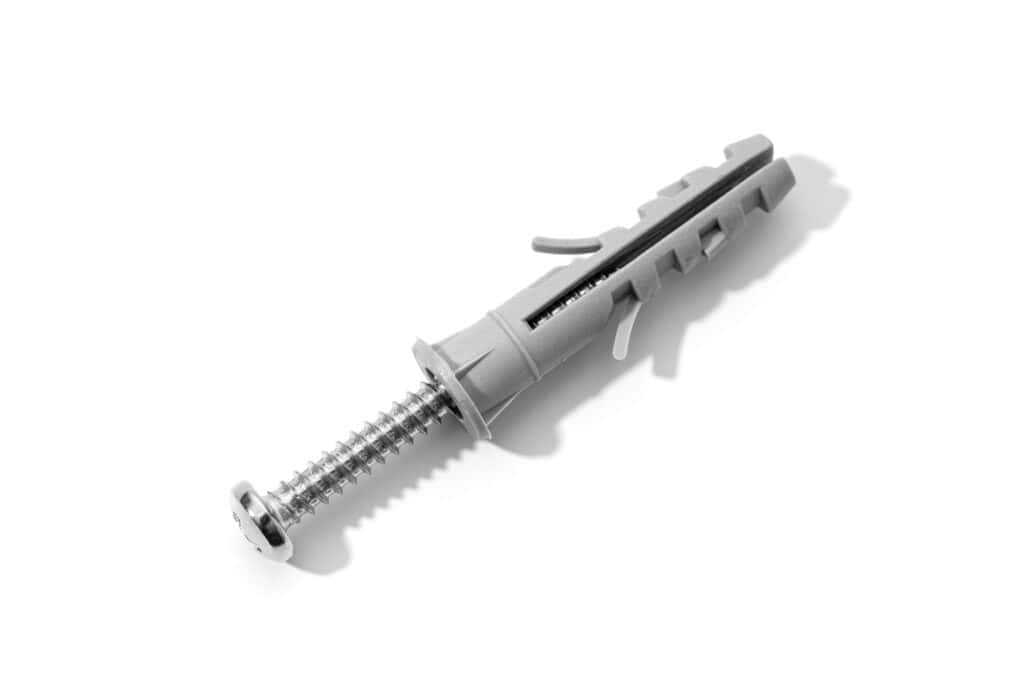
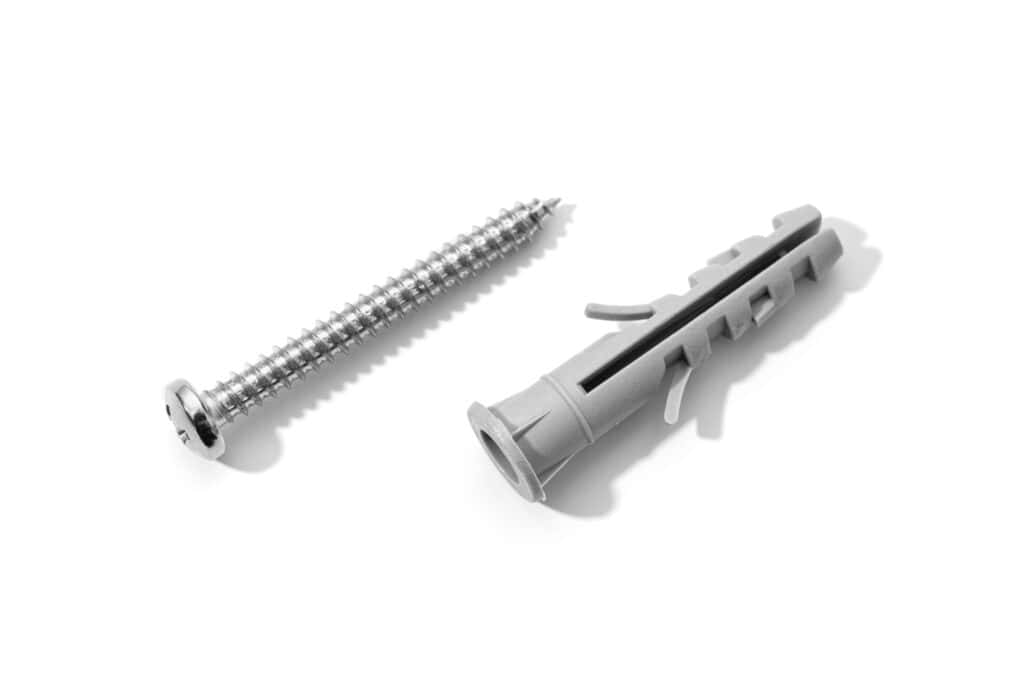
Machining
After forging, any necessary machining or cutting ensures the anchor meets tight tolerances (e.g. chamfering bolt ends, cutting to length).
Threading
- Overview Expansion screws are essential anchoring tools used to securely fix objects into concrete, brick, and other solid materials. Whether you're installing lightweight fixtures or mounting heavy equipment, our range of expansion screws ensures a strong, secure hold every time. We offer two major types of expansion anchors: Plastic Expansion Tubes with Screws – Ideal for lightweight applications such as wall-mounted accessories. Metal Expansion Bolts – Designed for heavyweight support like air conditioners, shelves, or industrial equipment. Our products are trusted by professionals in the Middle East, Southeast Asia, Europe, and the United States, where demand for quality fixings continues to grow.
- Manufacturing Process Our expansion screws are produced under strict quality control systems, including: Cold heading for high-precision screw heads Heat treatment for enhanced strength and durability Zinc or nickel plating for rust and corrosion resistance Automated plastic injection molding for expansion sleeves Final assembly and torque testing to meet global standards We support custom manufacturing according to drawing/specs and offer OEM packaging options for global distributors.
- Functions & Advantages ✅ Strong grip in concrete and brick substrates ✅ Easy installation with standard tools ✅ Wide range of load capacities (lightweight to heavy-duty) ✅ Anti-corrosion coatings for long service life ✅ Low cost, high reliability anchoring solution
Typical products
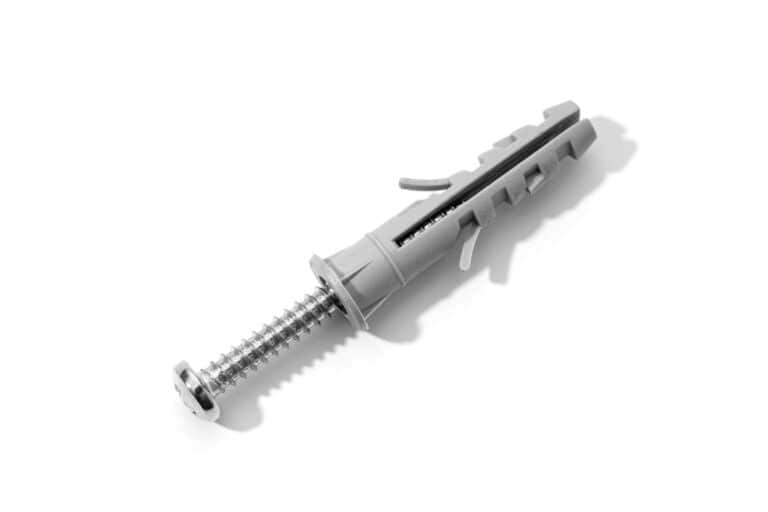
Plastic Expansion Plug + Screw (Wall Plug Anchors)
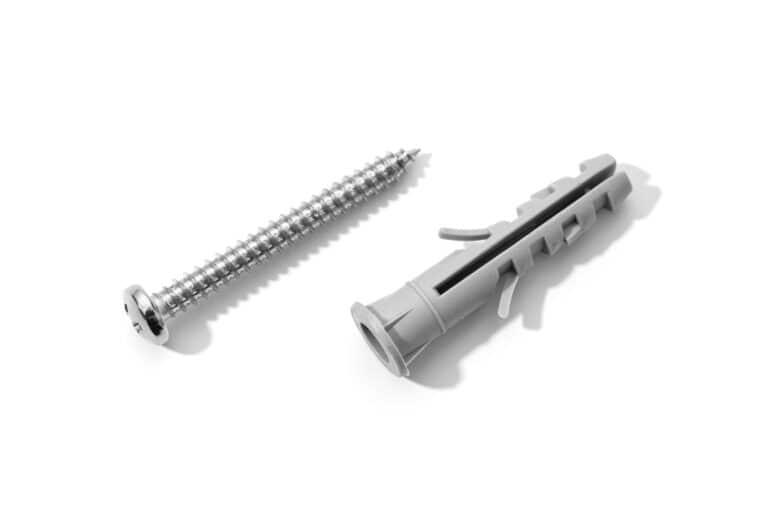
Metal Sleeve Anchor
Applications and Use Cases
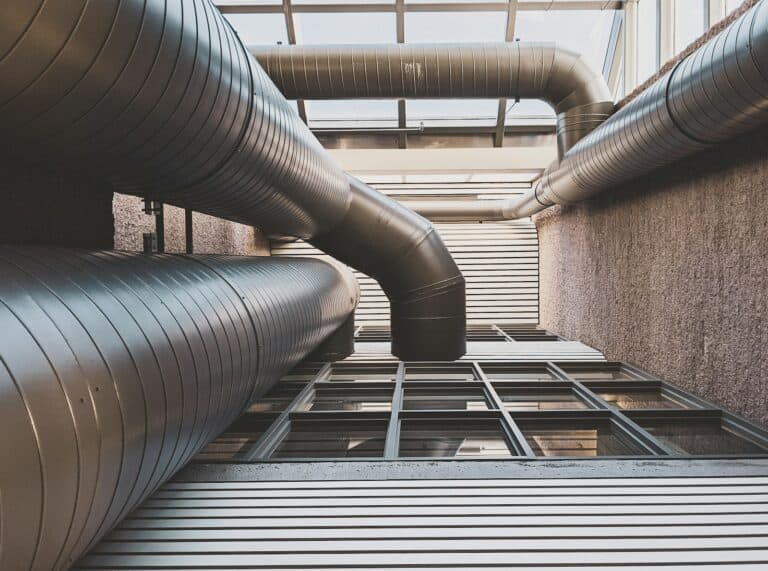
expansion anchors mount conduit trays, cable ladders, junction boxes, ductwork and air-handling units to walls and ceilings. They are also used in commercial and industrial facilities for mechanical equipment and machinery mounting. According to industry suppliers, these anchors are ideal for “construction, electrical, HVAC, and industrial projects” that require durable, high-strength attachments

For example, furniture, shelving units and TV mounts on block or drywall will use appropriate anchors (nylon plugs, screw anchors or toggle bolts) to ensure safety. Regardless of the sector, expansion screws are chosen based on the substrate and load: solid concrete, brick and stone for heavy fixtures; hollow block or drywall for lighter fixtures; outdoors versus indoors for weather exposure.
The Best Uses for Expansion Screws in Construction and DIY Projects
Introduction to Fastening Solutions
Expansion screws, expansion anchors, and expansion bolts are all types of fastening solutions designed for secure installation in drywall, concrete, and gypsum board applications—a crucial aspect of construction and DIY projects. Bolts are also commonly used as part of these fastening systems, especially for heavy-duty anchoring.
Heavy duty stainless steel expansion bolts and self-drilling anchors ensure strong fastening for cabinets, shelves, and wall fixtures, making them a popular choice.
Expansion anchors work by expanding inside drilled holes in a specific way to firmly grip walls, enabling easy and reliable installation with screws, bolts, and nuts. This expansion mechanism is a key feature of both expansion screws and expansion bolts, providing a secure hold for the object being fastened.
Understanding the different types of expansion anchors is essential for proper application and to ensure a strong grip.
Expansion screws, also known as wall anchors or expansion anchors, work to fasten objects securely to walls, ceilings, or floors.
Types of Anchors
There are two primary types of expansion anchors with slightly different expansion methods, including expanded and non-expanded anchors.
Expanded expansion anchors have an already expanded tip that grips the hole wall immediately upon installation, making them easy to use.
Non-expanded expansion anchors require you to tighten the anchor, which causes it to expand and grip the hole wall, providing a strong and secure hold.
Through bolts, sleeve anchors, drop-in anchors, and expansion bolts are common types of expansion anchors used in various applications.
Many expansion anchors include a nut, such as a petal nut design, which ensures a secure grip and maintains the firmness and stability of the fastening system.
When installing expansion anchors, it is important to avoid drilling a hole that is too small, as a smaller hole can negatively impact the grip strength and installation effectiveness of the anchor.
Each type of anchor has its own unique features and benefits, making them suitable for different tasks and projects.
Materials Used for Fasteners
Stainless steel and carbon steel are common materials used for expansion screws and bolts, offering durability and resistance to corrosion.
Metal expansion bolts and plastic expansion nails are available, catering to different wall materials and applications.
The choice of material depends on the specific application, load, and environmental conditions.
Heavy duty anchors are typically made from high-quality materials to ensure a strong and secure hold.
The use of stainless steel and other materials provides excellent antiseismic performance and prevents loosening over time.
Applications of Expansion Screws
Expansion screws are suitable for multiple applications requiring strong wall fastening, including drywall, concrete, masonry, and brick surfaces or structures.
They are commonly used for installing cabinets, shelves, and wall fixtures, as well as for securing heavy objects.
To install, simply place the anchor or screw into the pre-drilled hole in the substrate, ensuring proper placement for secure fastening.
Expansion anchors can be used in various settings, including construction, DIY projects, and industrial applications.
The use of expansion screws provides a secure and stable installation, making them a popular choice for many projects.
Expansion screws are also used for gypsum board and other materials, offering a versatile and reliable fastening solution.
Drilling and Installation
Drilling anchors and expansion screws require a hammer drill or a standard drill, depending on the type of anchor and material.
Before starting, check the suitability of the anchor for your specific application and confirm all installation details.
The correct drill bit size and type are essential for a successful installation, ensuring a strong and secure hold.
Expansion screws can be installed quickly and easily, without the need for pre-drilling, making them a convenient option.
It is essential to follow the manufacturer’s instructions and take necessary safety precautions during installation.
The use of a hammer drill and a specialized tool to expand or install the anchor can make the installation process easier and more efficient.
Heavy Duty Fastening
Heavy duty anchors are designed for heavy loads and demanding applications, providing a strong and secure hold.
They are typically made from high-quality materials, such as stainless steel, and are designed to withstand harsh environmental conditions.
Expansion bolts and screws are commonly used for heavy duty fastening, offering a reliable and durable solution. For particularly demanding or heavy-duty applications, large expansion bolts may be required to ensure proper support and stability.
The use of heavy duty anchors ensures a secure and stable installation, making them a popular choice for many projects.
Heavy duty fastening is critical for applications where safety and reliability are paramount, such as in construction and industrial settings.
DIY Projects and Construction
Expansion screws and anchors are widely used in DIY projects and construction, providing a secure and reliable fastening solution.
For example, a couple of common DIY projects where expansion screws and anchors are used include mounting shelves on drywall and securing curtain rods to masonry walls.
They are easy to use and install, making them a popular choice for many DIY enthusiasts and professionals.
Expansion screws can be used for a variety of applications, including drywall, concrete, and masonry, offering a versatile and convenient solution.
The use of expansion screws and anchors can save time and effort, making them a cost-effective option for many projects.
Expansion screws are also used for gypsum board and other materials, providing a reliable and durable fastening solution.
Concrete and Masonry Applications
Expansion anchors are commonly used in concrete and masonry applications, providing a strong and secure hold.
They are designed to expand inside the hole, gripping the concrete or masonry firmly, and ensuring a reliable fastening solution.
Through bolts and sleeve anchors are popular choices for concrete and masonry applications, offering a durable and long-lasting solution.
The use of expansion anchors in concrete and masonry applications provides a secure and stable installation, making them a popular choice for many projects.
Expansion anchors can be used for a variety of applications, including construction, DIY projects, and industrial applications.
Drywall Installations
Focus on the specific challenges and best practices for using expansion screws and drywall self drilling anchors in drywall and gypsum board.
Discuss the importance of choosing the right type and size of anchor for drywall, and tips for achieving a flush, secure installation.
Mention common objects installed in drywall (e.g., shelves, light fixtures) and how expansion anchors prevent damage or pull-out.
Fastener Sizes and Types
Expansion screws and anchors come in various sizes and types, catering to different applications and materials.
The choice of fastener size and type depends on the specific application, load, and environmental conditions.
It is essential to select the correct fastener size and type to ensure a strong and secure hold. When planning your project, make sure to place an order for the appropriate expansion screw or anchor that matches your application requirements.
The use of expansion screws and anchors provides a versatile and reliable fastening solution, making them a popular choice for many projects.
Expansion screws and anchors can be used for a variety of applications, including drywall, concrete, and masonry.
Safety Precautions and Maintenance
Outline key safety steps when installing expansion anchors, such as using the correct drill, wearing protective gear, and checking for hidden wires or pipes.
Discuss maintenance tips, like periodically checking the tightness of bolts and screws, and inspecting for signs of wear or corrosion, especially in heavy duty or stainless steel applications.
Troubleshooting Common Issues
Address frequent problems such as anchors spinning in the hole, not expanding properly, or failing to grip.
Offer solutions, such as using the correct drill bit diameter, cleaning out debris, or selecting a different type or size of anchor for the application.
Conclusion
Summarize the versatility and reliability of expansion screws and anchors for a wide range of construction and DIY projects.
Reinforce the importance of choosing the right type, size, and material for each application to ensure safety and durability.
Encourage readers to follow best practices for installation and maintenance for optimal results.
Now, I will proceed to write each new section accordingly.
Conclusion
Expansion screws and anchors are versatile and reliable fastening solutions widely used in construction and DIY projects. Their ability to securely fasten objects to various surfaces such as drywall, concrete, masonry, and gypsum board makes them indispensable for both professionals and hobbyists.
Choosing the right type, size, and material of expansion screw or anchor is crucial to ensure safety, durability, and optimal performance. Stainless steel and heavy-duty materials provide excellent strength and corrosion resistance, especially in demanding environments.
Proper installation techniques, including selecting the correct drill bit size, cleaning out debris from holes, and using appropriate tools like hammer drills, contribute significantly to the effectiveness of expansion anchors. Regular maintenance, including checking tightness and inspecting for wear, helps maintain the integrity of the fastening over time.
By understanding the different types of expansion anchors, their applications, and best practices for installation and maintenance, users can achieve strong, secure, and long-lasting fastening results for a wide range of projects. Whether mounting shelves, securing heavy objects, or working on industrial applications, expansion screws and anchors offer a dependable solution that stands the test of time.
Contact DingLong
Frequently Asked Questions (FAQ)
Q: How do I choose the right expansion screw and size for my project?
A: Select the anchor type based on the base material and load. Use wedge or sleeve anchors for solid concrete or block under heavy loads, and nylon/plastic anchors or toggle inserts for drywall or hollow masonry. Anchor diameter (bit size) should match the hole required by the anchor – manufacturers note that “anchor size is bit size” for simple sizing Always follow manufacturer charts for embedment depth and fixture thickness. For critical projects, consult an engineer or supplier with details of your load, spacing, and environmental conditions.
Q: What is the proper installation process?
A: Installation typically involves drilling a hole to the specified diameter and depth, cleaning out debris, then inserting the assembled expansion screw through the fixture. For sleeve and wedge anchors, the anchor is hammered into the hole until the washer/nut is snug against the fixture Finally, tighten the nut with a wrench – as you do, the anchor sleeve or clip will expand and lock in place. (Always wear safety gear and follow the torque/depth guidelines provided with the anchor.)
What load capacities can expansion screws support?
Q: What load capacities can expansion screws support?
A: Load ratings vary widely by anchor size, type, and concrete strength. For example, a 3/8″ zinc-plated sleeve anchor in 2000 psi concrete can have a pull-out value on the order of 1,400 lb and shear of 3,000 lb Engineers use these ultimate values with a safety factor (commonly 4:1) to determine the working (service) load. Always refer to the manufacturer’s load tables for the specific anchor size and installation. In general, expansion anchors are capable of thousands of pounds in heavy-duty configurations.
Q: What materials are expansion screws made of, and how do I choose the material?
A: The most common materials are carbon steel and stainless steel. Carbon steel anchors are usually zinc- or chrome-plated to resist rust and are suitable for indoor or dry conditions Stainless steel anchors (grades 304 or 316) are used in harsh or wet environments because they resist corrosion even when exposed to moisture, salt or chemicals When selecting, match the material to the installation environment: for example, use stainless anchors for outdoor, marine or industrial atmospheres, and plated carbon steel for sheltered, interior use.
Q: How can I ensure corrosion resistance for expansion screws?
A: For long-term durability, choose anchors with corrosion-resistant finish. In addition to selecting stainless steel parts, look for mechanical or electroplated coatings (hot-dip galvanizing, zinc plating, yellow dichromate, etc.) These coatings provide a protective barrier. Before installation, confirm that anchors and screws are free of rust or damage. In very aggressive environments, periodic inspection and maintenance may be needed.
